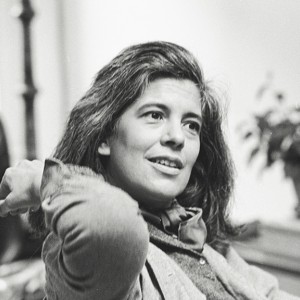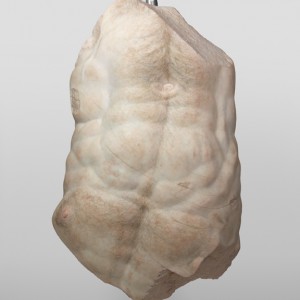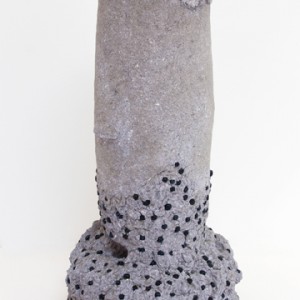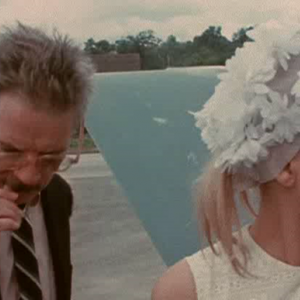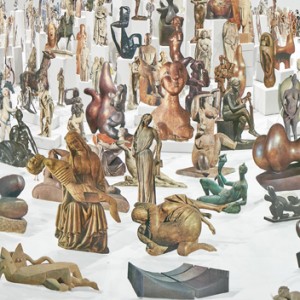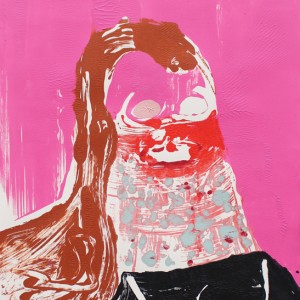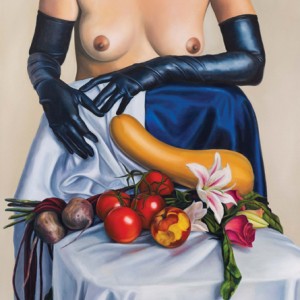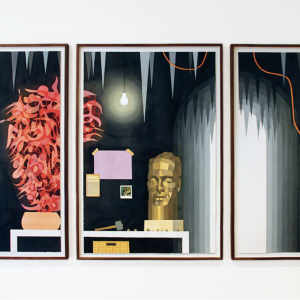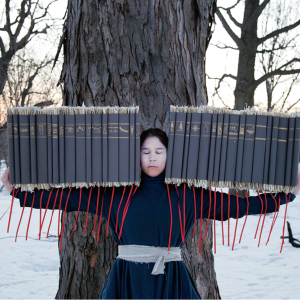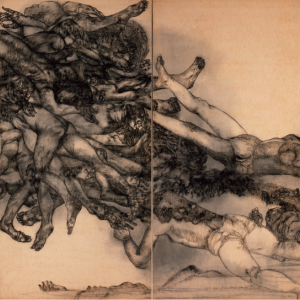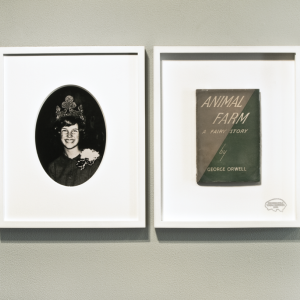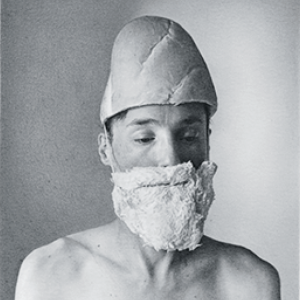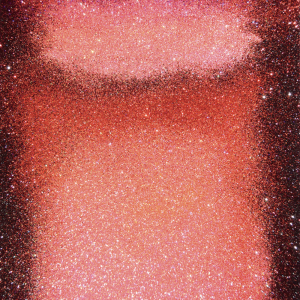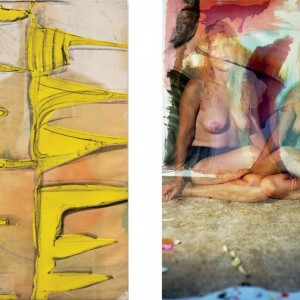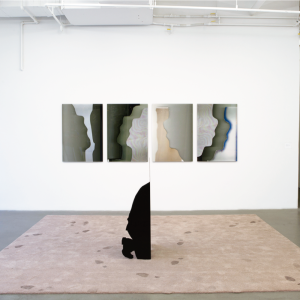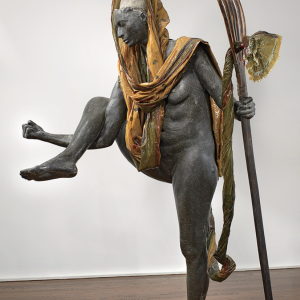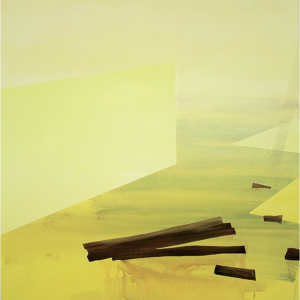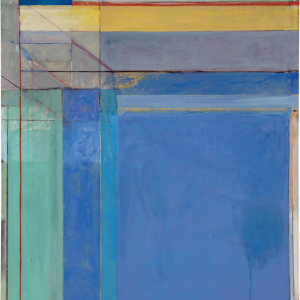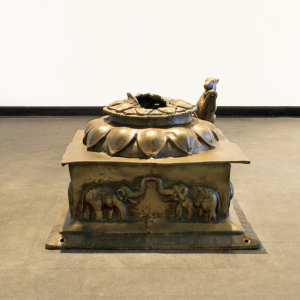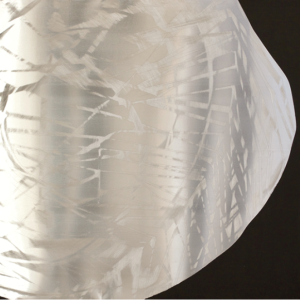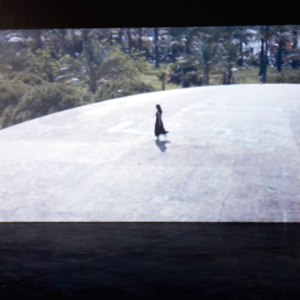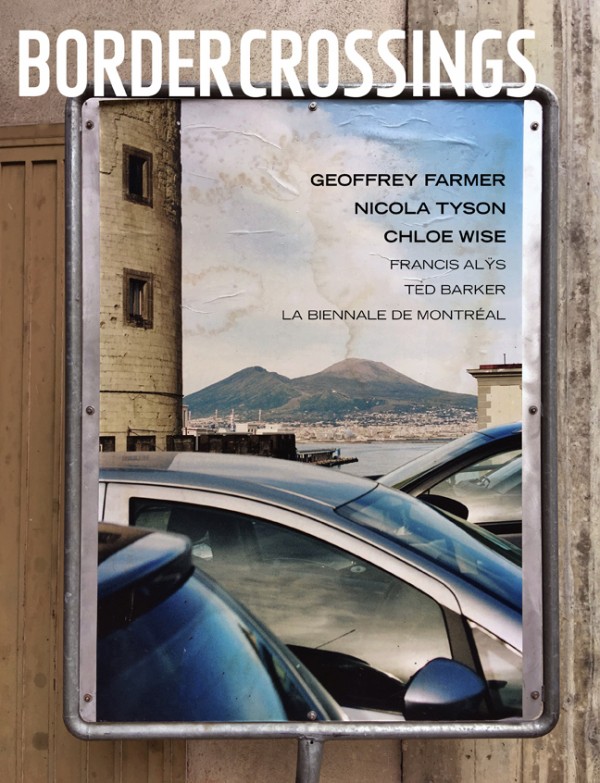
March 2017
#141
Today, many of us feel speechless at a time when the necessity for speech is urgent. The new Trump era has unhinged some deep hidden resentments, “in which people are so shameless in their meanness and their selfishness and their avidity and the willingness to judge almost everything by criteria of material gain…” Susan Sontag told Border Crossings in conversation 30 years ago.
In the current issue of Border Crossings, Editor Meeka Walsh has written, “The present is an age of acute loneliness. We are lonely because we are selfish, self-serving, seeking to satisfy our personal needs first. Or we are selfish and looking to satisfy our own needs because we are alone, lonely and have only ourselves.”
How do we move beyond our aloneness and isolation? The act of art making helps us connect with our selves, with others and with the world outside. Meeka Walsh discusses ethics and engagement in these difficult times in this issue’s Bordernotes.
In the spirit of inclusiveness, in this issue we look outwards— at artists exhibiting internationally— and close to home, at national and local talents.
Geoffrey Farmer We have interviewed Geoffrey Farmer who is representing Canada at the upcoming Venice Biennale. Farmer is known for his large-scale, meticulously crafted installations. In his interview, he speaks about collaging, about the act of cutting and reconstructing and how the void which is sometimes created becomes ripe with new potential.
Nicola Tyson Nicola Tyson is a New York based British artist. Tyson paints figural hybrids, fantastical creatures that assume the gestures of animals, birds, and other flying things. She talks about drawing as “mapping around with a pencil” and she describes her overall approach to composition as “mapping this very delicate dance where consciousness enters matter.” Tyson’s work is as alluring as her many mythical figures are fantastic.
Chloe Wise Chloe Wise is a Montreal born, New York based artist. A self-proclaimed ‘maximalist,’ she delves into the culture of desire, consumerism, and excess. She mediates a space between self-awareness and self-indulgence. About the use of humour in her work, Wise states: “I think satire and humour are ways we can deal with really dark things. Life is full of injustice and upsetting truths and horrific occurrences. So are we going to ignore it? No,” she suggests, “comedians do a better job at opening things up for conversation than art theorists.”
Also in this Issue:
Stephen Horne discusses how the Montréal Biennale is making Montréal an international hub of art and culture and questions how to curate a conceptual ‘whole’ amidst a diverse selection of international artists. Georgia Phillips-Amos discusses the work of artist Francis Alÿs whose famous paradox: “Sometimes making something leads to nothing,” stands as a metaphor for trying to get by in Mexico City in the face of overwhelming corruption and violence.
And … we present a beguiling portfolio of new drawings by Winnipeg artist, Ted Barker.
The review section includes: painter Simon Hughes, Meryl McMaster, artist-curator Ydessa Hendeles, Ted Barker, Nika Fontaine, photographer Elaine Stocki, Bharti Kher, Diyva Mehra, Kevin Kelly and a look at the exhibits: “Matisse/ Diebenkorn,” “Postwar: Art Between the Pacific and the Atlantic, 1945-1965,” “Superimposition: Sculpture and Image” and the “32nd São Paulo Biennale, “Incerteza Viva.”
Buy NowTable of Contents
-
Bordernotes
A Moral Place in the World -
Borderviews
The Body and Its Beautiful Damage - Archeology of the Future
-
Bordercolumn
Being and Somethingness Wanda, directed by Barbara Loden, 1970 -
Interviews
The Multitudinous See An Interview with Geoffrey Farmer - Self-Solving The Enigmatic Art of Nicola Tyson
- Something is Something Else An Interview with Chloe Wise
-
Articles
La Biennale de Montréal 2016 Le Grand Balcon - Spinning Fables The Art of Francis Alÿs
-
Portfolios
Drawing on Ambiguity A Portfolio by Ted Barker -
Crossovers
Simon Hughes - Meryl McMaster
- “Postwar: Art Between the Pacific and the Atlantic, 1945-1965”
- Ydessa Hendeles
- Ted Barker
- Nika Fontaine
- Elaine Stocki
- “Superimposition: Sculpture and Image”
- Bharti Kher
- Leigh Bridges
- “Matisse/ Dibenkorn”
- Divya Mehra
- Kevin Kelly
- “32nd Sāo Paulo Biennale, “Incerteza Viva”


